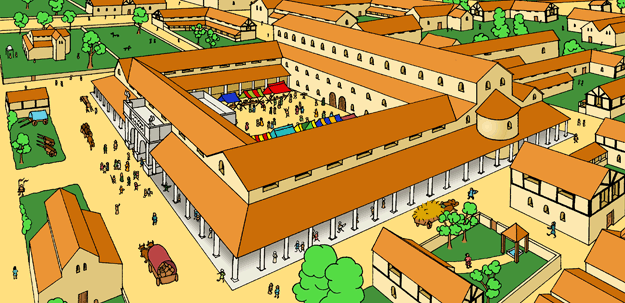|

|
|

Civilization
reaches Britain
|

- The Iron Age Britons
lived on small farms, or in hillforts. There were no towns.
- In the late Iron Age,
some tribes had capitals, but these were little more than
tribal villages. The Romans
called them 'oppida' (plural of 'oppidum').
- The Romans built proper
towns with a planned street-grid and lots of different
buildings, big and small:
- Town Houses - for
people to live in, some for rich merchants
- Shops - for selling
all sorts of things
- Workshops - for
making all sorts of things
- Snack Bars - for
eating in (Fast-food Roman style).
- Temples - for
worshipping the gods (including churches in later times)
- Public Baths - for
relaxing, exercising and keeping clean
- Inns - for people
from out-of-town to stay in, including Imperial postmen
- Theatres &
Amphitheatres - for entertainments from actors and
gladiators. Camulodunum (Colchester) even had a circus
(race track for horses).
- There were also
'mod-cons' never seen in Britain before, like piped water
supplies, drinking fountains and toilets.
- Each of the major tribes
was given civitas capital (like a county town) with a basilica
(town hall and law court - the big building in the picture
with all the windows) and a forum (market-place - the big
courtyard with the colourful stalls next to the basilica).
- Other towns grew up
around industrial establishments, important religious centres
or outside military
forts.
- In later years, big
strong walls and gateways were built around towns to protect
them from foreign attacks.
|
|

